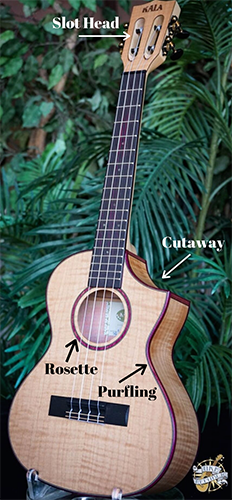4 Things to Consider Before Buying a Ukulele
1) BUDGET
In this video and article, we'll breakdown 4 things to consider before buying you first, or next, ukulele. The first thing to consider is budget. There are several factors that affect the price of a ukulele; with the two main factors being, size and construction.
Soprano, Concert, Tenor
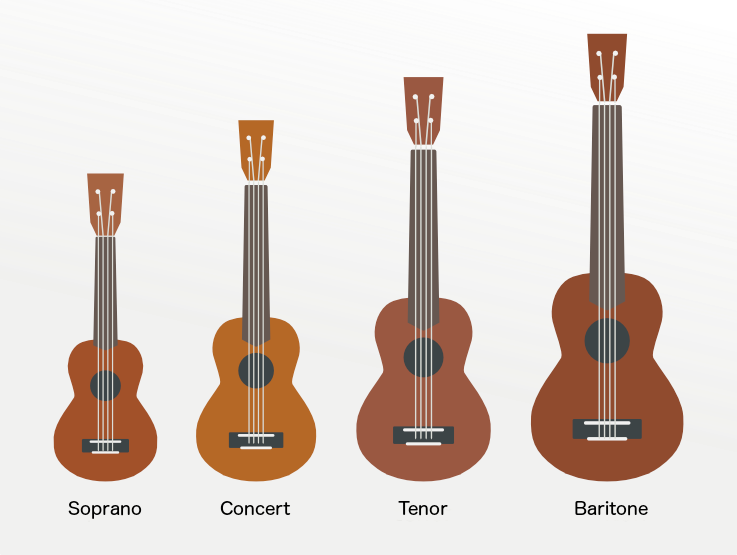
The three main sizes for traditionally tuned ukuleles are: Soprano, Concert, and Tenor. Baritone ukuleles are tuned differently, so we will focus on the former.
Soprano ukuleles are the smallest in size, and produce what most people recognize as the “traditional” ukulele sound. They are the brightest in tone and (usually) the cheapest to purchase. Concert ukuleles are a step up in size, but still remain true to the classic bright/treble tone. Tenor ukuleles are the largest in size and produce a deeper tone. Generally, the larger the ukulele, the more it will project.
Price Points
The way the ukulele is constructed leads to four distinct price points.
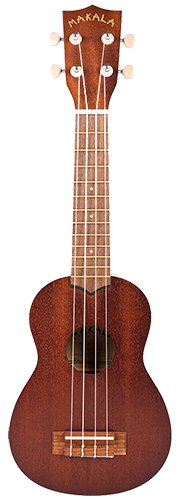
Laminate
Makala MK-S: $50
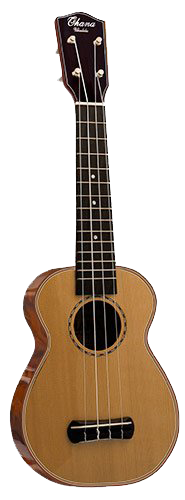
Solid Top
Ohana Solid Cedar Top: $250
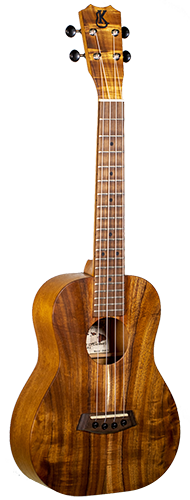
All Solid Wood
Kanile'a Oha: $750

Designer
Kanile'a 2019 Platinum Pineapple: $3,350
Laminate Ukuleles: $25 to $180
The first price point is for laminate ukuleles, which cost up to $180. Laminate ukuleles have bodies where the top, sides, and back are made from thin sheets of wood which are layered and bonded together (hence laminated). Because these sheets are not one solid piece of wood, the ukulele can lack sustain and richness in tone. But that doesn't mean a laminate cannot sound great! An example of an awesome, budget friendly laminate ukulele is the Makala that Andrew used in many early Rock Class 101 videos.
Solid Top Ukuleles: $180 to $300
The second price point is $180 to $300 for solid top ukuleles. Solid top ukuleles, as the name implies, have a solid wood top, but the sides and back remain laminate. These instruments offer greater sustain and richness in tone than their cheaper sibling. Solid tops also project louder and clearer. In the video (and pictured above), the Ohana that Mike shares is a rather fancy, solid top ukulele.
All Solid Wood Ukuleles: $300 to $800
For $300 to $800, you can get a ukulele with a solid top, back, and sides. Since all sides are made from a single layer of wood, these ukes will offer optimum sustain and projection. Like wine, as the wood ages, it creates a unique timbre with more richness.
Designer Ukuleles: $800 & Up
Designer ukuleles come in at the $800 and up level. For this price range, you are getting a full, solid body ukulele, but with a variety of options and perks. This category includes: custom instruments, instruments with fancy inlays and embellishments, boutique instruments, and instruments made in the USA. The price of these ukuleles are affected by the type of wood used, craftsmanship (assembly line vs. hand-made), and embellishments (such as: inlays, rosettes, and other things covered in the visual section of this article).
2) SOUND
The sound of a ukulele can be affected by the types of tonewoods used, the strings, and if the ukulele is electric or acoustic.


Pictured above: Kanile'a handcrafting a custom ukulele. Top: Curly Redwood. Back & Sides: Milo.
Ukuleles can be made from a variety of woods, with each wood offering a unique sound. To keep things simple, let's look at sound from two perspectives: bright vs. warm.
Bright tonewoods produce a punchy tone and project better than warm tonewoods. This makes them ideal in an ensemble setting. Contrastingly, warm woods offer darker, mellow tones. These woods provide more low range, and absorb the punchy bright frequencies.
It's important to note that some ukuleles combine woods. For example, having the top made of a bright wood, and the sides and back made of a warmer wood, helps to balance out the tone between the two types.
Here are a few examples of both types:
| Bright Wood | Warm Wood |
|---|---|
| Spruce | Cedar |
| Mahogany | Koa / Acacia |
Ukuleles can be amplified via a pickup. Pickups are a great option for a player that wants to play in large ensembles or for recording direct (plugged into the computer). However, the tone achieved via a pickup is not identical to how it sounds acoustically. Pickups will lose some of the quality of sound created by the wood.
3) PLAYABILITY
The playability of your ukulele is determined by a few factors: A professional setup, its neck profile, and nut width.
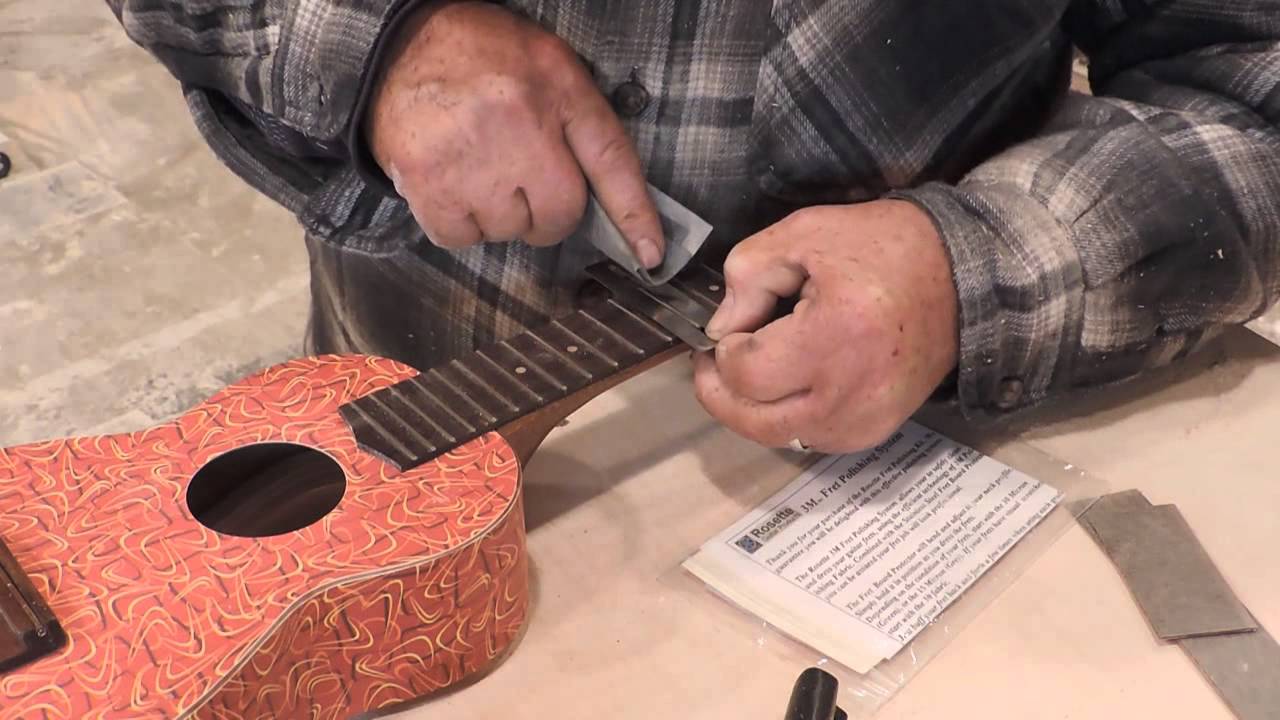
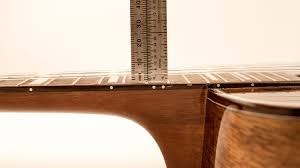
Pictured above: A setup includes: Dressing the frets and adjusting the action (string height).
Ukuleles priced under $1,000 generally do not come setup from the factory. Therefore, it's recommended to purchase from a mom and pop shop that sets-up every instrument, regardless of price. A setup ensures that your ukulele is properly adjusted so that it performs at peak condition. A setup includes:
1) Adjusting the action of the ukulele: This involves adjusting the string height. If the strings are too high, it will be difficult to fret notes and chords. If the strings are too low, fret buzz may become audible. Finding the proper height is vital for optimal playing.
2) Dressing the frets: This involves leveling (evening out) the frets so that each fret is uniform, as well as, making sure that frets do not protrude beyond the sides of the fretboard. In other words, if you hug the neck and slide your hand up and down it, you should not feel any pointy edges.
3) Intonating the ukulele: This ensures that the instrument remains in perfect tuning throughout the fretboard. Believe me, it's not fun playing an instrument that goes sharp (out of tune) as you play up the fretboard.
Neck Profile
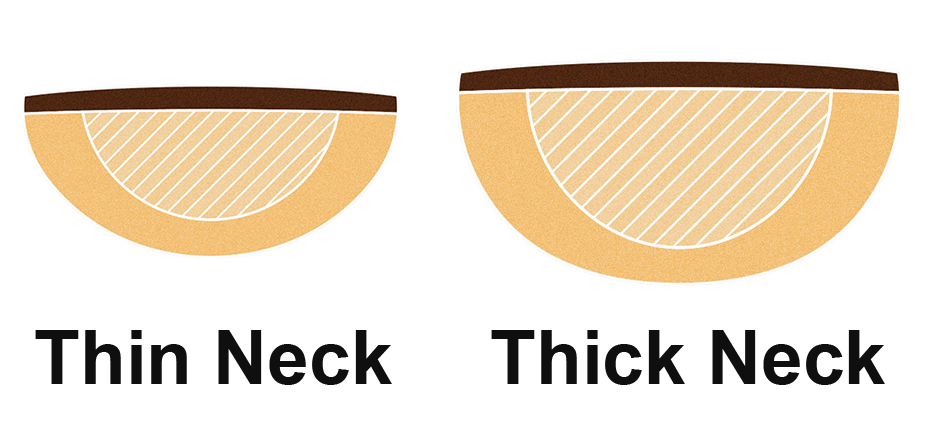
The neck profile, or size of the neck, can have a large impact on playability. For example, thicker necks make barre chords more difficult to play, as it requires more strength to get every note to ring true. On the other hand, thinner necks require less pressure to create the same barre chord. Therefore, we recommend soprano uke's with thin necks for children, and concert or tenor uke's with medium to thick necks for adults.
Although, the best advice we can offer is to visit a local music store and try out different sizes. Pick the one that feels most comfortable to you. Here are a few brand suggestions to help you get started:
| Thin Profile | Medium Profile | Thick Profile |
|---|---|---|
| KoAloha | Kala / Ohana | Pono Tenor |
Nut Width
The nut width affects the string spacing of the instrument. An average nut width is 1 ⅜ inches, which gives enough spacing to easily fret notes and chords on most ukuleles. If you have larger hands (or fingers), or prefer the strings to be further apart, there are instruments like the Koaloha in the video, which offers a larger 1 ½ inch nut width.
4) Visual Aesthetics
This aspect has no effect on the sound. However, you want an instrument that inspires you; one that catches your eye and draws you to play it! We'll consider the visual aesthetics from two perspectives: Simplicity and Decorative.
The first option, and cheapest, is to purchase a natural wood ukulele. Its beauty lies in its simplicity. It might have an interesting grain pattern (as seen above on the left), but otherwise it’s very minimalist in nature.
On the contrast, you may opt for a decorated ukulele. Decorated ukuleles can have inlays, rosettes, purfling, carved patterns, gloss finishes, and many other embellishments.
Inlays are designs and shapes on the fretboard that are often used to mark the frets. They can be made of pearl, wood, and many other materials. They come in different shapes, like circles or diamonds, and there are even numbered inlays that mark which fret you are on (such as the ukulele Matt plays).
Rosettes are a circular pattern around the sound hole that are purely for decoration. Purfling is similar to a rosette, but outlines the edges of the body of the ukulele.
Ukuleles can also be "finished", which means a protective film or coat is applied to the surface of the wood. Satin finishes appear matte, while gloss finishes add a shine to the instrument.
Finally, some ukuleles have intricate carvings such as the Kanile’a Platinum Pineapple Tenor (pictured above under "price points"); while others may include, slot-heads and cutaways. It's important to note that cutaways are not purely aesthetic, as they allow you to reach frets beyond the traditionally shaped concert and tenor sized ukuleles.
What To Take Away From This Article & Video
We hope this video and article has given you some new ideas to think about as you search for your first, or next, ukulele. Moving forward, I'd recommend watching video demos and reviews of different brands and different woods (start with these playlists from Uke Republic on Youtube).
Pay attention to what speaks to you. You may resonate with one brand over another. Also, think about what ukulele would compliment your collection. If you have a bright sounding ukulele, consider adding a warm, mellow ukulele to your stable.
At the end of the day, the possibility are truly endless; but enjoy the journey! For the hunt is just as fun as the day you bring it home!
Article by: Andrew Hardel & Stephen Cox
Special thanks to Mike at Uke Republic


